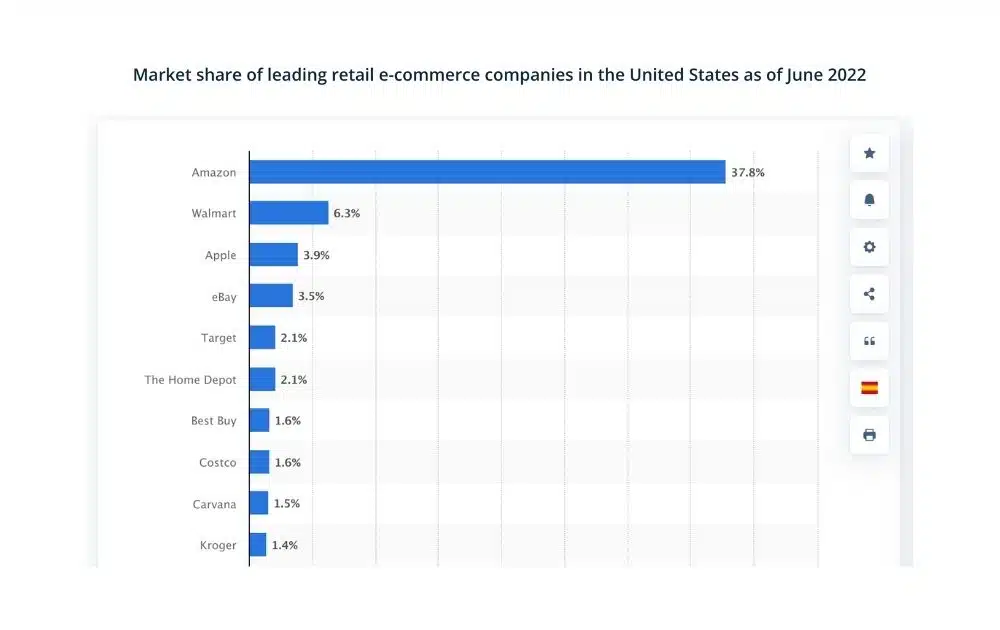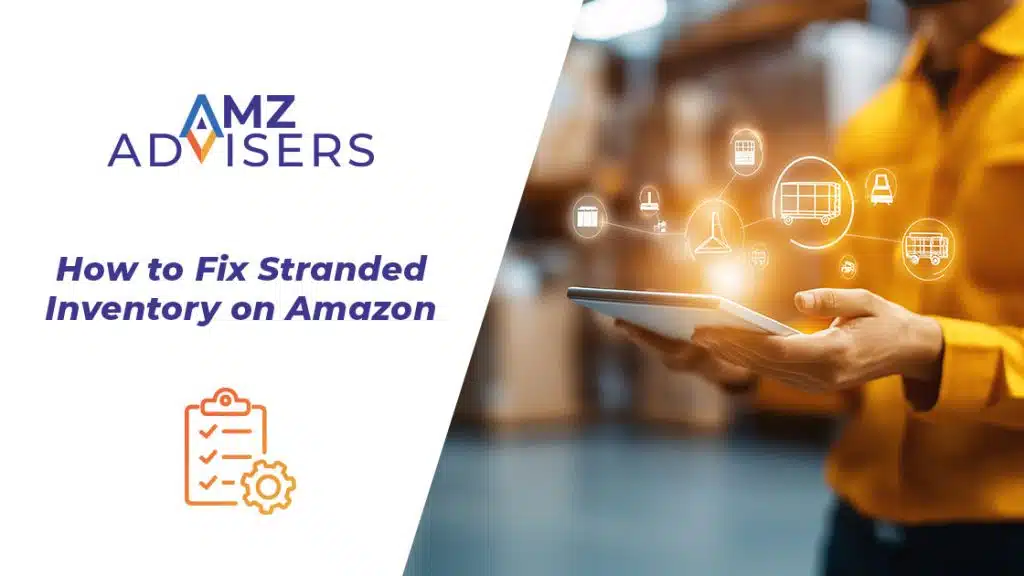Amazon Global Selling opens a gateway to untapped markets for online entrepreneurs, offering an unparalleled opportunity to expand their business beyond borders.
The program offers easy access to a wider market, fully supported by Amazon’s seller tools and logistics network. These tools can help you deal with tasks that may seem intimidating to a store owner, including currency conversion, international fulfillment, customs and duties assistance, and customer service in local languages.
Below, we delve into the intricacies of Amazon Global Selling, diving into the knowledge and tools required to navigate the complexities of selling globally.
What is Amazon Global Selling?
Amazon Global Selling is a service that enables online sellers to expand their businesses to international markets by selling their products on Amazon’s global marketplaces. It allows sellers to reach millions of potential customers in various countries and regions.

Through the Global Selling program, sellers can list and offer their products on Amazon’s international platforms. These include Amazon markets in:
- Asia-Pacific (Japan, India, Australia, and Singapore)
- Europe (United Kingdom, Germany, Spain, France, Italy, the Netherlands, Poland, Sweden, and Turkey)
- Americas (United States, Canada, Mexico, Brazil)
- Middle East (United Arab Emirates, Egypt, and Saudi Arabia)
Amazon Global Selling facilitates cross-border trade and promotes marketplace expansion. Plus, it allows customers from different countries to purchase products from sellers in other parts of the world.
Amazon’s 2023 Q1 net sales increased 9% to $127.4 billion compared to net sales from the same time in 2022. So, it goes without saying that the program opens up vast opportunities for an Amazon international seller.
What are the Benefits of Amazon Global Selling?
Whether you wish to sell on an established market like Amazon Japan, or an emerging market like Amazon Brazil, the Global Selling program offers a range of benefits.
Access to a Global Customer Base
Sellers can gain access to potential customers in various regions around the world. Each marketplace caters to customers in their respective regions, so sellers can tap into localized audiences.
In addition to this, being an international seller on Amazon can reduce low sales periods within your territory, as you take advantage of peak seasons in other countries.
Leveraging Amazon’s Brand Trust
Amazon’s global reputation as a trustworthy and reliable marketplace works to the advantage of international sellers. In the US alone, Amazon accounted for 37.8% of ecommerce market in 2022. Walmart is a far second at 6.3%, followed by Apple at 3.9%.

Customers worldwide associate Amazon with quality. As a result, this reputation can help boost the credibility and sales potential of products sold through the platform.
Localization Options
Different regions have unique cultural preferences, language differences, and local customs. By leveraging localization options, sellers under the Global Selling program can adapt their product listings to resonate with the cultural nuances of each target market.
Taking a genuine interest in a country’s culture and traditions fosters a deeper connection with international customers. It’ll motivate them to engage with the product and make a purchase.
In the same vein, sellers can tailor product titles, descriptions, and bullet points in the local language, ensuring that customers understand the product’s features and benefits. This enhances the overall customer experience, leading to higher conversion rates.
Currency Conversion
Amazon Global Selling allows buyers to view product prices in their local currency. Doing so simplifies the sales process and creates a seamless and user-friendly shopping experience, reducing potential friction during the checkout process.
Displaying prices in local currencies can also enhance transparency. For instance, customers can compare product prices directly with other local options, allowing them to make informed purchasing decisions.
Customer Service and Support
When utilizing Amazon FBA, sellers benefit from 24/7 customer support provided by Amazon in the native language of the specific marketplace. This feature bridges communication barriers and ensures smooth interactions, addressing customer inquiries in their own language.
With the advantage of Amazon’s local language customer support, sellers can deliver world-class service to their clientele, while also devoting their attention to drive growth.
Amazon also has a Seller Central Language Switcher. Using this tool, you can manage your operations in all Amazon marketplaces in English, simplifying the process of being an international seller on Amazon.
What are the Setbacks of Amazon Global Selling?
Selling in a global marketplace offers many benefits, but it also comes with some challenges, such as:
- Language Barriers. Selling in international markets may involve dealing with language barriers, making it difficult to communicate effectively with customers and provide support in different languages. This is particularly applicable for sellers who choose to fulfill orders themselves.
- Regulatory Compliance. Each country has its own set of regulations and laws governing e-commerce, import/export, and product compliance. Ensuring compliance with these regulations can be complex if not done with the right guidance.
- Currency Fluctuations. Currency exchange rates can fluctuate, leading to variations in product pricing and conversion fees that may impact your profit margins.
Despite these challenges, many sellers find that the benefits of Amazon Global Selling outweigh the setbacks. Careful planning, research, and strategic execution can help you navigate these issues and succeed in the global e-Commerce landscape.
How to Enroll in Amazon Global Selling
Here are some of the initial steps to get you started with global selling on Amazon.
Setting Up An Account
You need to set up a new Amazon Global Selling account in the marketplace where you want to sell. For instance, if you already sell in Amazon US and you want to expand in Japan, you would need to create a new Amazon seller account for Amazon.co.jp.
However, there are exceptions to this rule. For instance, Amazon provides a Unified Account for European marketplaces. As a result, you can sell in another marketplace in Europe using your initial Amazon European marketplace account.
Amazon also offers a North America Unified Account, allowing you to sell in the US, Canada, and Mexico from one seller account interface.
The account registration requirements include:
- Chargeable VISA or Mastercards
- Valid bank account
- Standard product ID such as UPC or EAN code
Complying With Regional Requirements
Various marketplaces have different Amazon Global Selling requirements. For instance, to be able to sell in Amazon India, it is required for you to be a locally-owned business in the country.
It’s best to consult the Amazon Global Selling guide to get up-to-date information about selling fees and the specific marketplace where you want to sell.
Setting Up Payment
You can open a bank account in the country where you wish to conduct your sales for greater control over your finances. However, this process is usually more complex and may require having a legal business entity in that country.
One secure and adaptable payment solution is Amazon Seller Wallet (currently available in Amazon US.) This digital wallet can hold funds generated from selling on Amazon, allowing merchants to transfer funds to their local bank accounts.
The Amazon Currency Converter is another option to receive your earnings in your local currency and directly into your bank account. At present, this tool is available only in specific regions, so it’s best to refer to Amazon’s full list of supported locations.
Creating Product Listings
Just as with any other seller requisites, product listing requirements may differ per marketplace. However, these are the generic components of product listings in Amazon:
- Product ID. These are the global identification numbers for products, such as an EAN, UPC, or ISBN.
- Product title. This is a concise and descriptive name for the product.
- Bullet points and product description. Bullet points highlight key product features to catch customers’ interest, while the product description provides in-depth information.
- Product images. Clear and detailed photos must showcase the product.
- Search terms. Keywords that potential customers might use to search for your product. Multiple search terms can be provided.

Choosing an Amazon Marketplace to Sell In
As Amazon operates 16 online stores globally, the first thing you need to decide on is where to expand internationally. To evaluate an effective entry strategy into an international marketplace, you can employ the “four P’s” marketing framework.
Product
Assess whether your product aligns with the target country’s requirements. It goes without saying that products must comply with local laws and product standards.
For instance, some items suitable for one marketplace may not be appropriate for another due to voltage differences or size variations.
Price
Take note of several new costs, such as international shipping expenses and customer support costs for providing services in a local language.
You may also have to spend on conversion costs related to currency exchange and taxes, and duties applicable to international sales.
It’s important to note that many of these variable costs depend on whether you choose to fulfill products independently or use Amazon FBA.
Placement
You can also boost your distribution channels to support a global business. If you’re using Amazon FBA, you can utilize Multi-Channel Fulfillment to manage sales from other online channels.
This feature allows you to fulfill orders from platforms outside Amazon‒such as your own website‒while using the same inventory pool.
Promotions
Amazon offers advertising and promotional tools to boost your product visibility. These tools differ depending on the Amazon marketplace and may include Free Delivery, Money Off, Buy One Get One (BOGO), and others.
Moreover, you can enhance exposure to your products through Amazon Sponsored Products, an advertising service based on cost-per-click. It allows you to promote your products through keyword-targeted ads, driving more traffic and potential sales.

The Lowdown
Amazon Global Selling presents a remarkable opportunity for online sellers to expand their ventures globally. The program streamlines various challenges, such as currency conversion, fulfillment, customs, and customer service.
With such a wealth of opportunities, it’s essential to carefully plan and research your target marketplaces, adapt your products to resonate with local preferences, and utilize available tools to boost your venture’s global growth.
Author

Carla Bauto Deña is a journalist and content writer producing stories for traditional and digital media. She believes in empowering small businesses with the help of innovative solutions, such as e-commerce, digital marketing, and data analytics.



